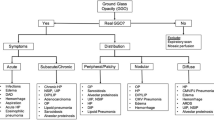Abstract
Formalin pigment deposition is a known artifact of autopsy histology, often anecdotally associated with decomposition of bodies. However, there is minimal data within the forensic literature demonstrating an association between formalin pigment deposition and length of postmortem interval. Furthermore, there is minimal data concerning other predisposing factors and patterns of distribution of formalin pigment deposition. In this study, we compare the amount and patterns of formalin deposition on histology slides from three categories of death: 1) decomposed bodies, 2) critically ill at time of death, and 3) sudden cardiac death. We also compare the effectiveness of two relatively simple histology laboratory methods to remove formalin pigment deposition from histology slides. Amongst the three categories of death, formalin deposition was highest in the decomposed category, second highest in the critically ill category, and lowest in the sudden cardiac death category. The organs most severely affected by formalin deposition were liver/spleen/pancreas and kidneys, and the organs least affected were brain and lung. Formalin pigment deposition correlated with length of postmortem interval. Histologic patterns of formalin deposition included the endothelial lining of vessels, perinuclear compartment of neurons and myocytes, and the basal epithelial compartment of renal tubular epithelial cells. The alcoholic ammonium hydroxide method (AAH) was slightly more effective than the alkylphenol ethoxylate (APE) method for removing formalin pigment, though both methods were effective. Because formalin pigment is strongly refractile under polarized light, a polarization filter can also be useful for distinguishing formalin pigment from other pigments.







Similar content being viewed by others
References
Pizzolato P. Formalin pigment (acid hematin) and related pigments. Am J Med Technol. 1976;42:436–40.
Henwood A. What is the best procedure to remove formalin pigment from formaldehyde-acetic acid-alcohol fixed tissues? J Histotechnol. 2010;33:109–11.
Cook H. C. Manual of histological demonstration techniques. London: Butterworths; 1974.
Byard RW, Tsokos M. The challenges presented by decomposition. Forensic Sci Med Pathol. 2013;9:135–7.
Collis S, Johnson CP. The decomposed cadaver. Diagnostic Histopathology. 2019;25:431–5.
Parai JL, Milroy CM. The utility and scope of forensic histopathology. Acad Forensic Pathol. 2018;8:426–51.
Byard RW, Winskog C. Histology in forensic practice: required or redundant? Forensic Sci Med Pathol. 2012;8:56–7 discussion 8-72.
Molina DK, Wood LE, Frost RE. Is routine histopathologic examination beneficial in all medicolegal autopsies? Am J Forensic Med Pathol. 2007;28:1–3.
Krywanczyk A, Bundock EA. Quantifying macrophages and hemosiderin in pediatric dura mater. J Forensic Sci. 2018;63:902–5.
Vanezis P. Interpreting bruises at necropsy. J Clin Pathol. 2001;54:348–55.
Tomita H, Vawter MP, Walsh DM, Evans SJ, Choudary PV, Li J, et al. Effect of agonal and postmortem factors on gene expression profile: quality control in microarray analyses of postmortem human brain. Biol Psychiatry. 2004;55:346–52.
Donaldson AE, Lamont IL. Biochemistry changes that occur after death: potential markers for determining post-mortem interval. PLoS One. 2013;8:e82011.
Zhou C, Gilbert JD, Yool A, Byard RW. Basal epithelial formalin pigment deposition in the kidneys--a useful marker for ketoacidosis at autopsy. J Forensic Legal Med. 2013;20:305–7.
McGovern J, Crocker J. Effect of formalin pigment removal on peroxidase-antiperoxidase immunoperoxidase technique. J Clin Pathol. 1986;39:923–5.
Buchwalow I. B, Bocker W. Immunohistochemistry: basics and methods. Heidelberg: Springer Berlin; 2010.
Acknowledgements
The authors thank Ms. Carrie Upton from the Department of Laboratory Medicine and Pathology, Research and Innovation office at Mayo Clinic, Rochester, MN for administrative support.
Author information
Authors and Affiliations
Corresponding author
Ethics declarations
Disclosure of potential conflicts of interest
The authors declare that they have no conflict of interest.
Research involving human participants and/or animals
No
Informed consent
Not applicable (deceased individuals, medical examiner permission obtained).
Additional information
Publisher’s note
Springer Nature remains neutral with regard to jurisdictional claims in published maps and institutional affiliations.
Rights and permissions
About this article
Cite this article
Chatzopoulos, K., Treeck, B.V., Venable, E. et al. Formalin pigment artifact deposition in autopsy tissue: predisposing factors, patterns of distribution and methods for removal. Forensic Sci Med Pathol 16, 435–441 (2020). https://doi.org/10.1007/s12024-020-00240-5
Accepted:
Published:
Issue Date:
DOI: https://doi.org/10.1007/s12024-020-00240-5




